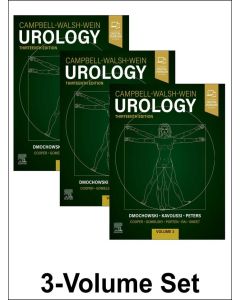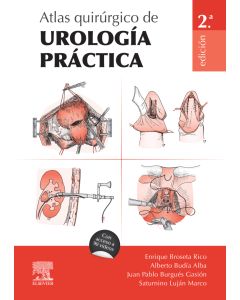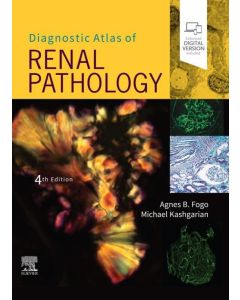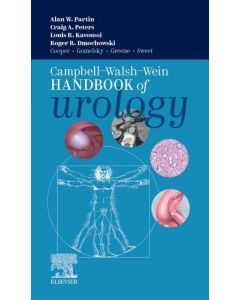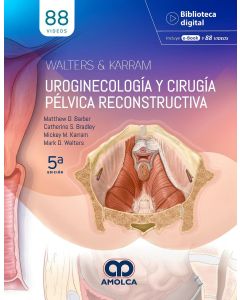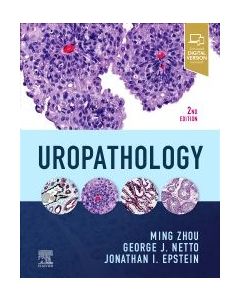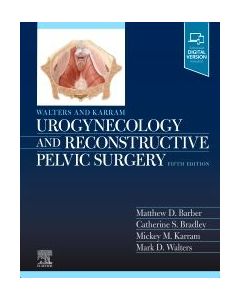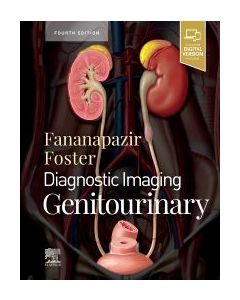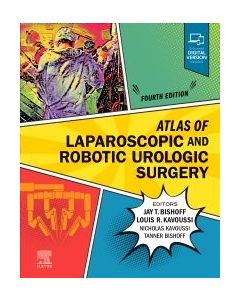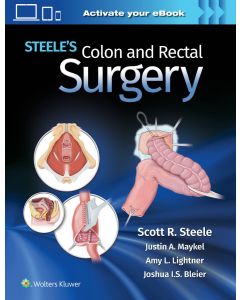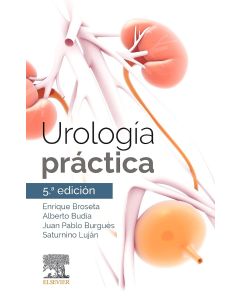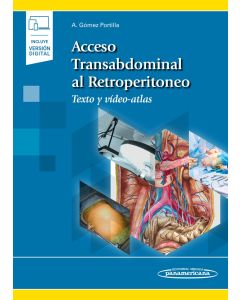Textbook Of Urogenital Prosthetic Surgery Incluye Ebook
-
Especialidad
- Urología

SECTION I General Contents
CHAPTER 1 The History of the Penile Prostheses
- First descriptions and management of erectile dysfunction
- Initial attempts at penile prosthesis for the treatment of ED
- 1974 to Today
- Current considerations and new directions
CHAPTER 2 Historical Aspects of the Artificial Urinary Sphincter
- Early Devices
- Evolution of the American Medical Systems (AMS) devices
- AMS 800
CHAPTER 3 Functional and Surgical Anatomy in Erectile Dysfunction Restoration Surgery
- Smooth Muscle Anatomy
- Tunical anatomy
- Neuroanatomy
- Vascular anatomy
- Space of retzius anatomy
- Extraperitoneal anatomy
- Glans
- Other anatomical considerations
CHAPTER 4 Functional and Surgical Anatomy in Male and Female Incontinence Surgery
- General concepts of stress urinary incontinence
- Female anatomy
- Male anatomy
CHAPTER 5 General Aspects for a Correct Penile Prosthesis Implant Strategy
- Introduction
- Patient selection
- Surgical logistics
CHAPTER 6 How to Set Up a Prosthetic Urology Centre
- Introduction
- The unconditional advantage of a dedicated team
- Pre‑ and post‑operative involvement of dedicated nurses
- The next step: growing and teaching
- Conclusions
SECTION II Erectile Restoration (Inflatable Penil Prosthesis Placement-IPP Placement)
CHAPTER 7 Preoperative Assessment
- Penile prostheses
- Informed consent
- Medical clearance
- Patient personal preparation
- Skin preparation
- Antibiotics
- MRI, metal detectors
CHAPTER 8 Basic Scrotal and Infrapubic Techniques
- Anaesthesia
- Penoscrotal vs. infrapubic approach
- The penoscrotal (PS) approach
- The infrapubic (IP) approach
- Salient features of each approach
CHAPTER 9 Intraoperative Management I
- Antibiotic use
- Foley catheter placement
- Incisions and retractors
- Corporal dilation and implant placement
- Cylinder choice
- Cylinder sizing
- Ambicor‑rod width sizing
- Cylinder placement
- Corporotomy closure
- PTFE sleeve
CHAPTER 10 Intraoperative Management II
- Reservoir placement
- Iliac Vessel injury
- Bladder injury
- Pump placement
- Routing of tubing
- Tubing length (inadequate or redundant)
- Use of drains
- Simultaneous surgery
- Skin closure‑wound dressing
- Semi‑inflation of an IPP
- Special considerations
CHAPTER 11 Postoperative Considerations I
- Antibiotics
- Penile Positioning
- Postoperative visits and wound care
- Cycling the device
- Corporotomy disruption
- Cylinder aneurysm
- Impendingcylinder erosion (laterally or into the urethra)
- Cylinder erosion (laterally or into the urethra)
- Reservoir erosion into the bowel or bladder
- Impending pump or tubing erosion
- Disrupted outer silicone layer
- Presence of calcified matrix (putty) or calcified biofilm
- Scar incased in PTFE sleeve
- Tubing kink
- Connector failure
- Approach to repair of an uninfected implant
CHAPTER 12 Postoperative Considerations II
- Penile necrosis
- Infection
- Bleeding
- Pain
CHAPTER 13 IPP & Corporal Fibrosis
- Introduction
- Etiology of corporal fibrosis
- Surgical strategies in fibrosis
- Other strategies for fibrosis
- Does length matter? Strategies to maximize it
CHAPTER 14 IPP and Peyronie's Disease 169
- Introduction
- Specific features of prosthetic Surgery in Peyronie's disease
- Surgical algorithm
- Residual curvature correction after penile prosthesis implantation
- Lengthening procedures in Peyronie’s Disease
- Complications related to penile prosthesis in the Peyronie’s population
- Postoperative rehabilitation
- Satisfaction outcomes after penile prosthesis in Peyronie’s population
CHAPTER 15 Redo Penile Prosthesis Implantation for Mechanical Failure
- Epidemiology
- Causes of penile prosthesis failure
- Imaging
- Tips and tricks in redo penile implant surgery for mechanical failure
CHAPTER 16 Penile Implants and Priapism
- Clinical features of priapism
- Treatment
- Immediate penile prosthesis placement
- Penile prosthesis with severe corporal fibrosis
CHAPTER 17 IPP in neophallus
- History
- Use of prosthetic implants in the neophallus
- Principles of penile prosthesis insertion in the neophallus
- Preoperative considerations
- Operative / intra‑op
- Postoperative care
- Functional outcomes
- Complications
- Device survival
- Explantation for infection or erosion
- Revision surgery
CHAPTER 18 Building an IPP Practice & Peri‑Procedural Counseling to Optimize Patient Satisfaction
- Building an IPP practice
- Peri‑procedural counseling to optimize patient satisfaction
- Final thoughts on optimizing a high‑volume IPP clinic from Dr. Köhler
- Final thoughts on optimizing a high‑volume IPP clinic from Dr. Wilson
SECTION III Urinary Incontinence: Artificial Urinary Sphincter (AUS) and Sling
CHAPTER 19 Urinary Incontinence (AUS). Preoperative Assessment (Standard and Troubleshooting)
- Initial evaluation
- Challenging stuations
- Revision surgery
CHAPTER 20 Basic Perineal & Scrotal Techniques
- Anatomy
- Basics
- Surgical procedure
- Comparison of the different approaches
CHAPTER 21 AMS 800 Prosthesis ‑ Intraoperative Management
- Antibiotics
- Foley catheter
- Incisions – retractors
- Double versus single cuff
- Cuff sites
- Measuring for cuff sizing
- Urethral dissection
- Urethral injury
- Transcorporal (TC) cuff with or without penile implant
- Urethral wrap
- Hydraulic testing
- Choice of reservoir pressure
- Reservoir placement – Inguinal, midline, ectopic
- Reservoir filling – technique, volume
- Pump placement
- Routing of tubing
- Wound closure – Dressing
- Urethral catheter removal
CHAPTER 22 Artificial Urinary Sphincter (AUS) Postoperative Considerations
- Initial deactivation (6 – 8 weeks)
- Antibiotics
- Urinary retention
- Wound separation
- Early device infection
- Subsequent post‑operative period
- Late complications
- Risk factors
- Device information card and medic alert
- Management of situations after recovery is complete
- Other conditions that complicate artificial sphincter use and longevity
- Concern about the pressure‑regulating balloon location

